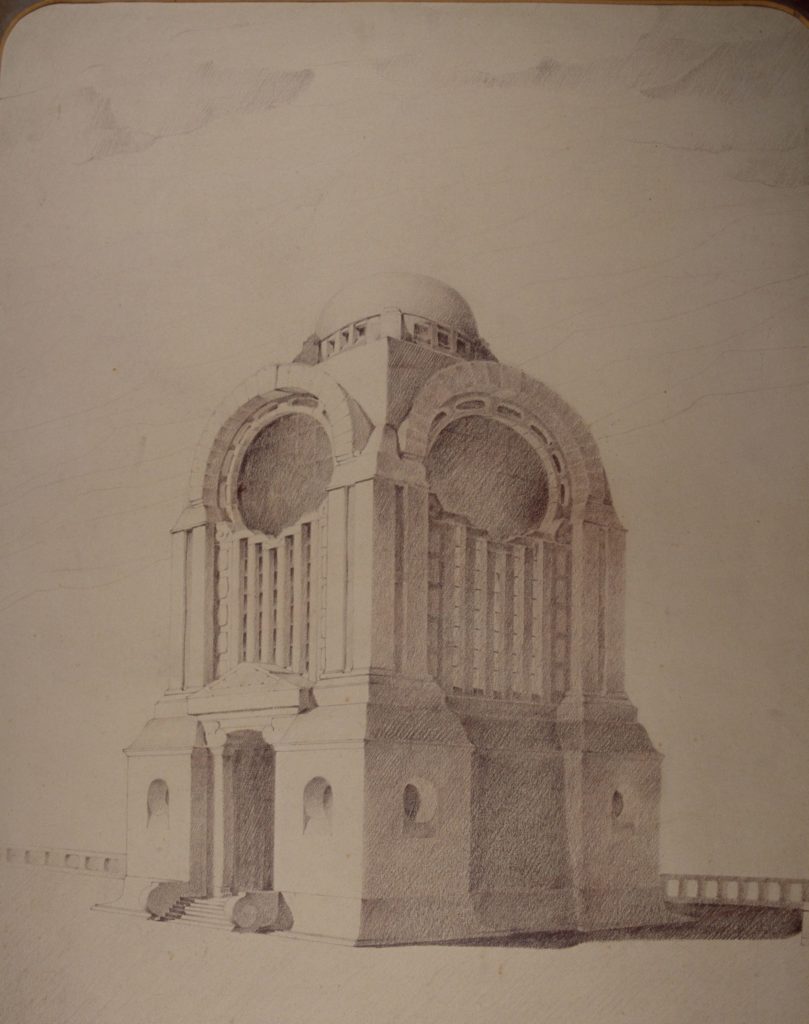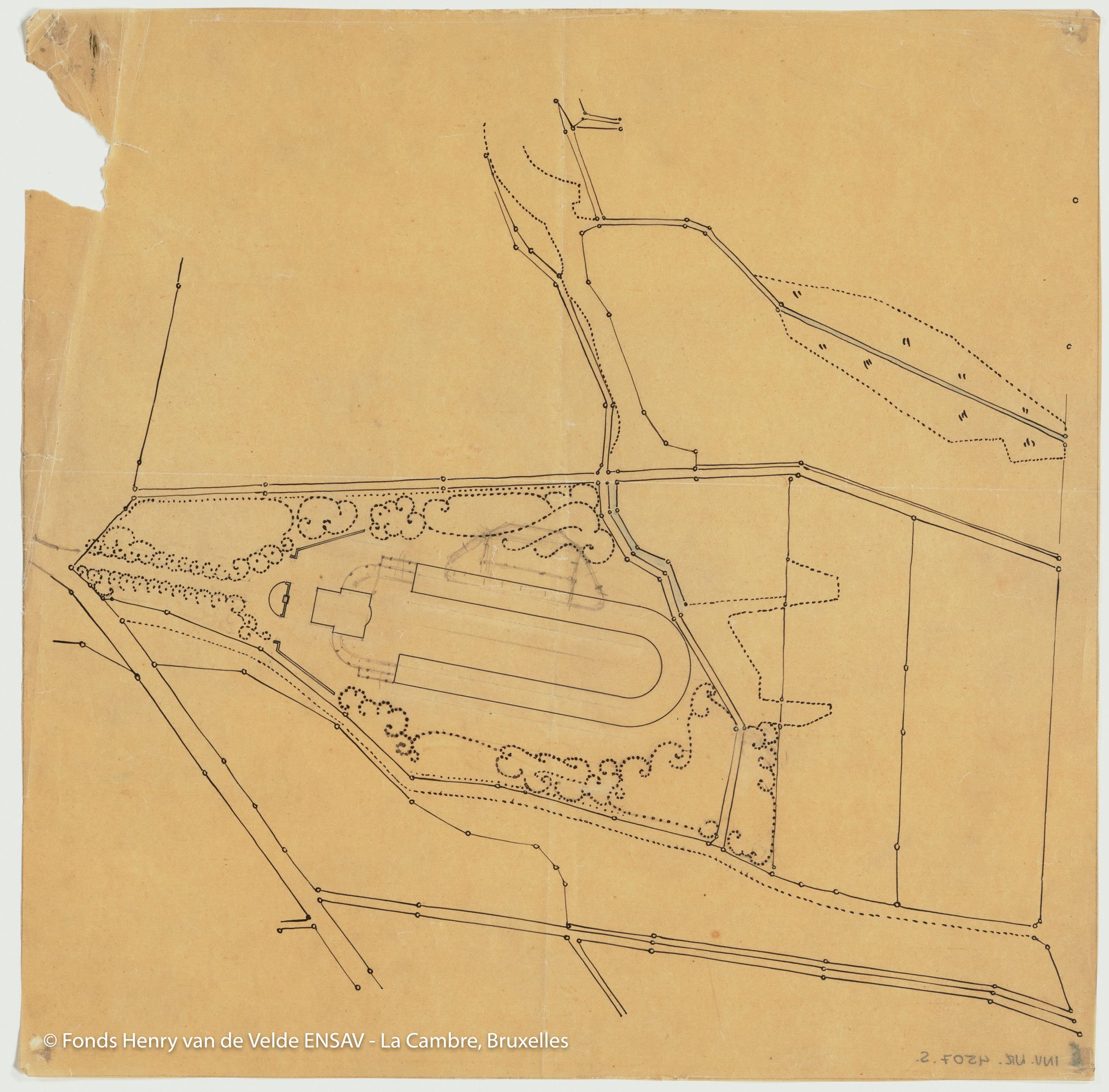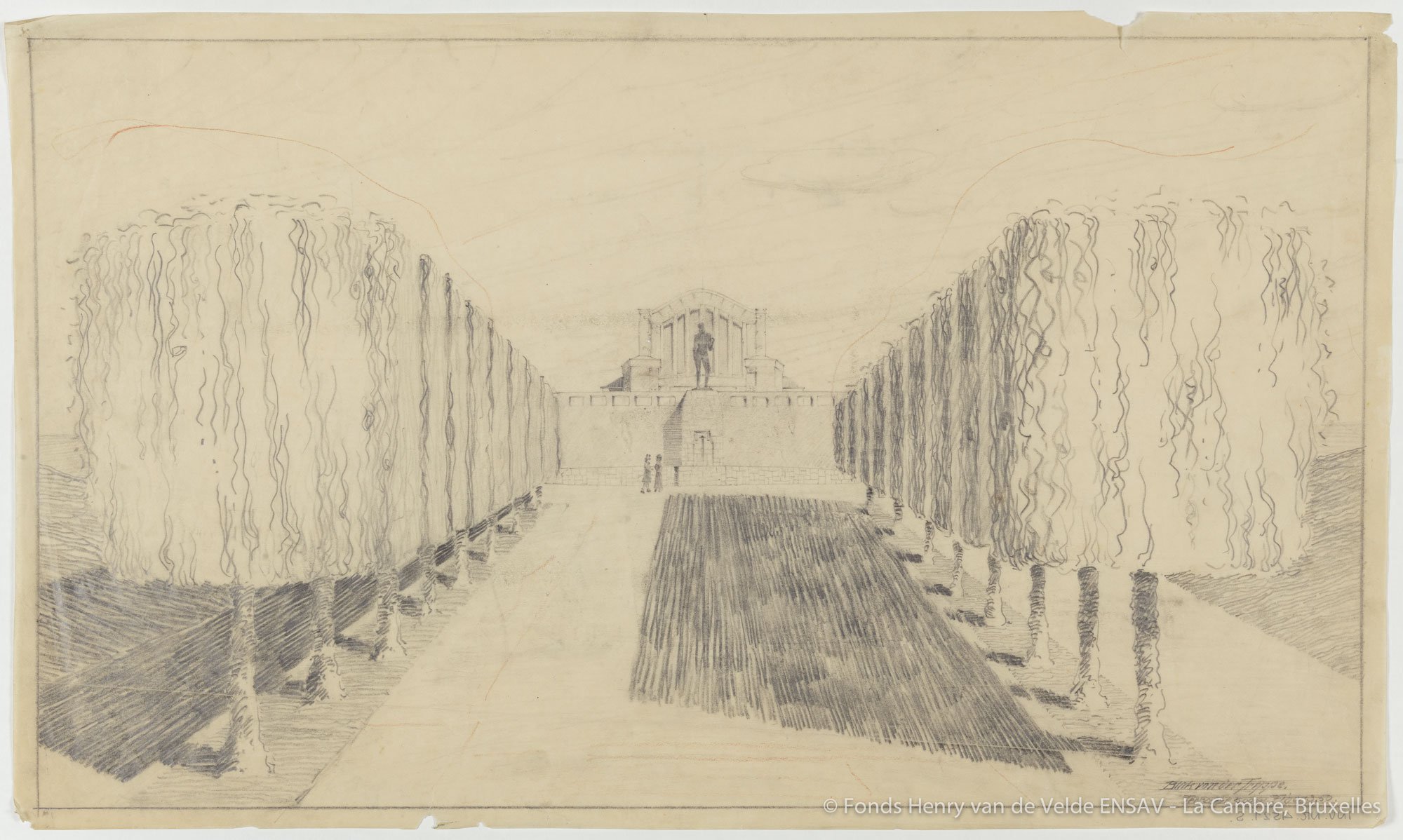Henry van de Velde and a Monument to Nietzsche

Count Harry Kessler – the German aristocrat, publisher, patron and friend of seemingly everyone in the European avant-garde – had long had in mind a worthy monument to his idol, Friedrich Nietzsche, whose seventieth birthday would be celebrated on 15 October 1914. Beginning in February 1911, Kessler began sending letters to his close friend Henry van de Velde with plans for that monument. This would be marked by the marriage of the Mediterranean Appollonian with a sculpture by Aristide Maillol and the northern, musical Dionysiac with bas-reliefs by Max Klinger. Van de Velde – the Belgian ‘romano-German’ – would unite the two with his ‘germano-classical’ architecture. [1] Kessler wrote about fundraising, about the choice of members of the project’s committee and, with a successful appeal to meet the huge cost, he foresaw that ‘we will have something superb and timeless.’ [2]
Nietzsche’s sister, Elisabeth Förster, selected land adjoining the Nietzsche Archive in Weimar. This was too modest for Kessler’s aspirations. He wanted nothing less than a temple whose orientation to the setting sun would establish a link with the Bismarck Tower on the Ettersberg hill overlooking the city. When he informed van de Velde that ‘our monument has put on weight, got fatter’, he sent a sketch. The added weight was a stadium, where every year, or several times a year there would be track events, wrestling matches, games and competitions (Nietzsche was the first great modern thinker to preach the beauty of strength and the joy of feeling alive). [3]
This was not an unusual proposition. The Olympic Games had taken place since 1896. The cult of the body was part of cultural life, a link with a classical Mediterranean ideal celebrated in arcadian works such as the pastoral scenes of nude figures by Ludwig von Hofmann. Opponents to the scheme produced evidence that Nietzsche had expressed a horror of ‘the servile imitation of Hellenism practised by the rich and idle rabble in Europe’. [4] Elisabeth Förster too became opposed, envious of the funds Kessler was raising, which would have been welcome at the archive.
Van de Velde searched in Nietzsche’s writings for guidance, while Kessler gave demanding requirements for ‘a light, floating monument’. It is difficult to see van de Velde’s designs for the temple as answering this brief: he favoured the original, simpler plan of a memorial building, a ‘temple’, at the end of a tree-lined avenue. For this site he made four designs. In the first design, the long avenue ended at a wall which incorporated Maillol’s proposed statue. Behind the wall was a promenade leading to a temple. This building was to serve as a concert hall and lecture theatre. It would thus embody life of the spirit. Physical life was represented by the stadium on the alternative site, which Kessler hoped would attract sports organisations and generate income. He sent van de Velde a diagram of what he intended. From February 1911 to the autumn of 1913 Kessler sent letters of guidance and criticism (in the beginning it was several letters in one week), steering the project in new directions. Van de Velde replied, sometimes with a calming telegram, on one occasion a letter amounting to more than one thousand words. Discussing the sports in the stadium, Kessler asked van de Velde to buy a book about football in order to track down the measurements of the pitch. [5] In September 1911 they met in Normandy to discuss progress, and in December Kessler came to see the model in Weimar.

Van de Velde’s second design has Maillol’s statue in front of a semi-classical temple and a U-shaped stadium. The third design kept the wide path which led to an open space rising at the sides to the promenade terrace bordered by a convex wall. The temple is rectangular in plan on two levels, windowless on the ground floor with four massive entrances under a flat roof, in the centre of a promenade terrace. The entrance is separated from the stadium by a lake. The stadium has a double row of terraces reached by an upper passage with access from vast staircases at each end, surmounted by statues. Space under the terraces is given over to a restaurant and bar, changing rooms and washrooms for the athletes. The fourth design retains a temple on a square plan, on two levels with a tribune, the façades identical except for the entrance portal.



But the scheme foundered on clashes between Kessler and Förster and outrage at raising support outside Germany. Van de Velde realised that the project would be abandoned. [6] Ten years later he returned to the task of memorialising Nietzsche in the Netherlands with a more modest design, which would also remain unbuilt.
And the Weimar project had a surprising coda. In October 1935, shortly before Elisabeth Förster’s death, Hitler visited the Nietzsche Archive with his architect Albert Speer, and assured her that he would continue with a Nietzsche monument. With Nazi Party publicity, work was ceremoniously begun in 1937 and continued during the Second World War. [7] For the new memorial Mussolini contributed a statue of Dionysus, which arrived at Weimar railway station in 1943, at the very moment it was under attack from US aircraft.
Extracted, with permission, from Henry van de Velde by Richard Hollis, published by Occasional Papers. Available through the publisher.
Notes
Further reading
Antje Neumann, ed, Harry Graf Kessler – Henry van de Velde: Der Briefwechsel, Cologne: Böhlau, 2015.
An account in English appears in Hans-Jürgen Sembach, Henry van de Velde, London: Thames & Hudson, 1989.
- Letter, 3 February 1911.
- Letter, 2 February 1911.
- Letter, 14 April 1911.
- Récit, vol 2, p 355.
- Letter, 26 September 1911.
- See Récit, vol 2, note 2, p 362.
- Peters, pp 305–06.
